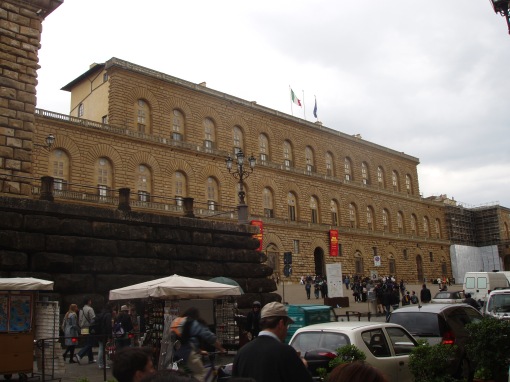There are quite a few very important antique textiles in Florence museums, which are considered very important in the history of embroidery. It is not strange to find that the designers and embroiderers of these works are males. (Quoted from Davanzati Museum): “Embroidery from the Middle Ages to the end of the 18th century was a highly qualified male profession, although 16th century documents attest to the activity of highly qualified female workers who, during the course of the 19th century – with the end of the Corporations – completely substituted the male embroiderer.
1. I will first start with the Davanzati Museum. It houses the largest collection of antique laces (both bobbin lace and needlelace) and embroideries (mostly samplers) in the highest quality, despite the small rooms. Most of the laces and embroideries are hidden from light in drawers so take time to inspect these drawers. Also don´t forget to read the descriptions of the exhibit. Groups of needleworkers around Florence, like the cross stitch group, hold events at the Museum every now and then, so be sure to ask for information. About antique embroidery techniques in florence, they have 3 types: the stitch (ricamo a punti passati), the appliquéd (ricamo in applicazione) and the drawn or pulledwork ( ricamo sfilato e tagliato) embroideries.
2. Next important place to visit is the Museo dell´Opera del Duomo, whichis located at the back of the Duomo (Cathedral). Fee is 6€. It houses antiquities which are found in or made for the Dome, including Michaelangelo´s unfinished Pieta. The Museum used to be a workshop where masters like Donatello used to create masterworks.
Though largely damaged, the Life of San Giovanni series in Or nué (Silk shading and goldwork embroidery) are the most important textiles in the museum. It is designed in the later 15th century by Antonio del Pollaiolo for the Baptistery. The techniques used are extensive.
3. The last piece of embroidery is the largest of the embroideries and is difficult to find. It is the piece called The Coronation of the Virgin Mother with 8 Angels and 14 Saints (Incoronazione della Vergine fra otto angeli e quattordici santi) and is located at the 2nd level of the Galleria dell´Accademia, where Michaelangelo´s David is also a resident. This embroidery is more than 4 meters wide and more than a meter high. The male master embroiderer was Jacopo Cambi. The embroidery is preserved very well, considering it was finished in 1336, compared to the John the Baptist series! It has both gold and silver threads, and silk embroideries. This altar piece has interesting embroidery techniques in the ornamentic details on the borders, the clothes and jewelries (including the halos) of the figures. The silkshading of the leaf work on the borders are also impressive. Except for the Dome Museum, it is forbidden to take photos or videos. I can only share photos of the entrances.
4. Though the costumes at the Costume Gallery in Palazzo Pitti seem a lot, I do not find the collection to be important to hobbyist needleworker, unless you are interested in making costumes. Most of the collection are from the 19th century. I find the oldest pieces to be the most interesting, but they are heavily damaged. No photos as well.









Leave a comment